Most Common Roof Leak Areas
Our roofs are a part of our house that we largely ignore until something goes wrong. As long as your roof is in good condition then it doesn’t do anything to draw your attention. However, as soon as every rainstorm has you carefully positioning buckets to catch a drip or mopping up afterwards, your roof suddenly will be the subject of lots of scrutiny!
Whether you’ve got a new leak or are just trying to be proactive, here is a list of the most common leak locations. Keep in mind that working on roofs is dangerous and specialized work, if your roof is leaking we recommend that you let a professional take care of it!
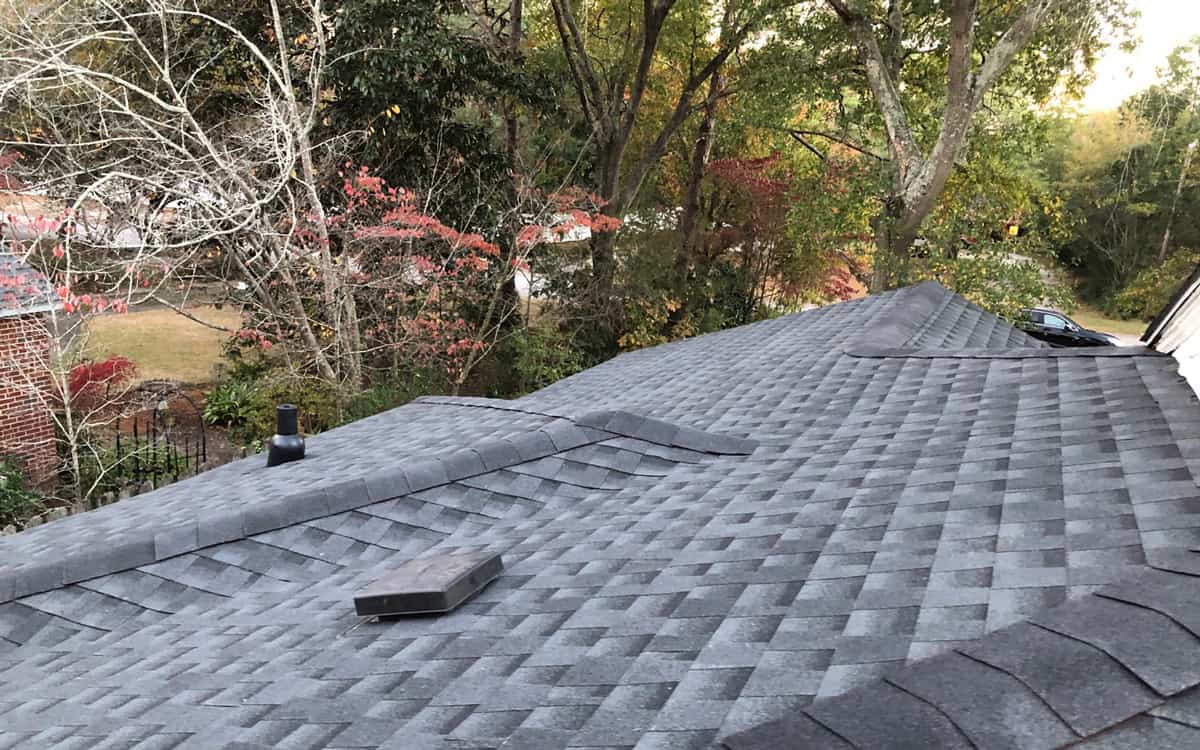
What areas are prone to roof leaks?
From the ground your roof may look simple – an unbroken expanse of shingles whose sole job is to keep your house dry. However, if you look closer you’ll see that roofs are actually made up of several different subsystems including several different types of vents and skylights. Below the visible surface, your roof also includes a layer of roof sheathing, which is just as important as the more prominent shingles which lay atop it.
While each of these parts play important roles, some of them are more susceptible to leaks. Should you notice a leak indoors, these are the first areas you should suspect:
Plumbing Vent Boots
It’s common to see a few pipes sticking out of roofs – but what is less common is awareness of what role these pipes serve. Plumbing vents provide protection for your house’s plumbing trap seals (the p-shaped sections of pipe that sit below drains and prevent the ingress of sewer gas into your house). These vents serve an important role, and that is why we willingly poke holes in our perfectly good roofs to accommodate them!
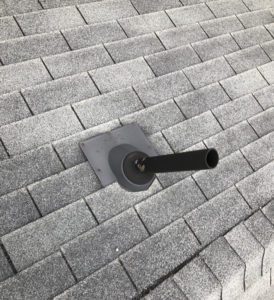
To prevent these vents from being a constant source of leaks, the area around these vents are sealed with flexible structures called boots. These boots are typically made of rubber and permit a tight seal between the vent and your roof. Over time the boot rubber may deteriorate, crack, and fail, permitting water leaks.
Skylights
Skylights brighten dark corners of your house and can greatly improve a room’s ambiance. However, their addition to your roof introduces a lot of opportunity for leaks, particularly as they age.
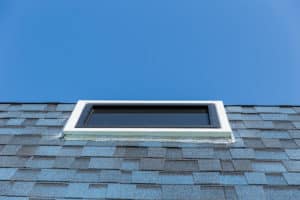
The most common source of leaks from skylights happens when the weather seals are damaged – either due to age and UV exposure or possibly from storm-damage. This is a relatively easy fix, only requiring new seals or caulking to be installed.
Less common but more serious are cracks on the glass of the skylight. There is no solution for this except for completely replacing the unit. This is a major job and it is not a recommended DIY project. Contact a reputable roofing company to take care of this type of repair.
Roof Valleys
A roof valley is just what it sounds like: the trough formed by the intersection of two adjacent sections of roof. These areas are often responsible for directing runoff coming from a large portion of your roof, making them prime candidates for leaks.
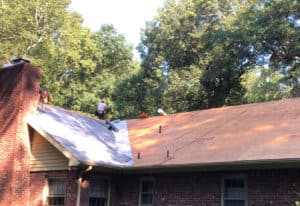
Valleys may develop leaks in the winter as water can accumulate there and freeze. The process of freezing causes the water to expand, potentially damaging the flashing and giving water an entry point.
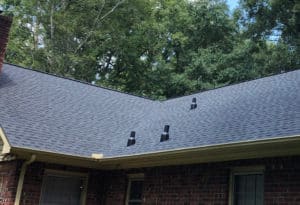
If leaves are allowed to accumulate in roof valleys then the metal flashing may corrode prematurely, leading to failure. Be sure to keep your roof free of debris buildup to maximize the lifespan of your roofing materials.
Roof Sheathing
Beneath your shingles lies a layer of plyboard or oriented strand board (OSB), called roof sheathing. Under normal circumstances this sheathing generally stays dry, or if it gets wet due to severe weather it should be able to dry out quickly.
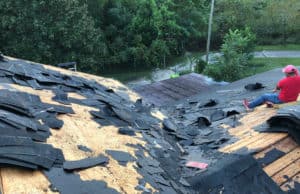
However, if the roof sheathing gets wet and stays wet it can develop mold and will rapidly deteriorate. This problem is hard to detect as the sheathing sits below your shingles and above your insulation.
One sign of a leak affecting your roof sheathing is if you see visible sagging of your roof. This means that the sheathing has weakened and the weight of the shingles above it are causing it to deform. If you notice any sagging of your roof, contact a roofing contractor ASAP as these problems will only grow in severity, possibly requiring the installation of an entirely new roof.
Roof Vents
Roof vents are yet another hole that we voluntarily add to our roofs, and as such pose a risk of leaks. These vents serve an important role, allowing moist air to escape from your attic, preventing condensation and mold from forming, and so the risk is worth it.
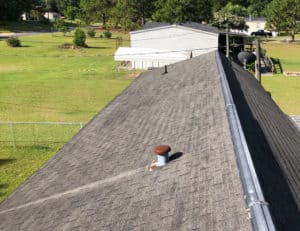
There are several different types of roof vent, ranging from ridge vents to box vents to wind-turbine style vents. Depending on the type of vent you’ve got, the cause of the leak may vary. Ridge vents are very reliable and typically only leak if not installed properly.
Other types of roof vents may begin to leak if they experience storm damage, and box vents have been known to leak during rain storms with high winds. You’ll likely need a professional roofer to properly diagnose and remedy the problem.
Roof Flashing
Flashing is the term for sheets of metal that are used to waterproof the intersections between your roof and intersecting vertical surfaces like walls or chimneys. Over time the flashing can rust through, providing water with easy access to your house.
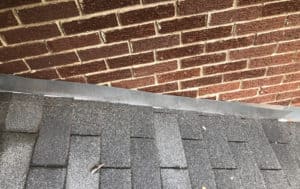
In the case of step flashing, the nails holding it in place can pull free or rust, allowing the flashing to slip. This can create a large passageway for water, literally overnight!
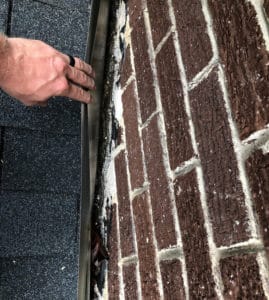
Homeowners should have their roof inspected regularly, as this is the type of problem that can often be detected before it becomes a serious problem.
Broken Shingles
This is one of the most visible sources of leaks – if you spot missing shingles on your roof, or you find some dislodged shingles in your yard after a storm then you have a leak brewing. Newer roofs are less likely to experience this problem than old roofs, and if your roof is shedding shingles it may be a sign that you need a new roof.
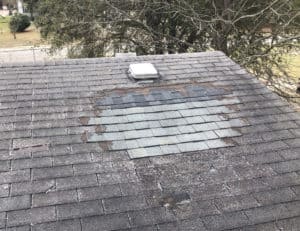
If your roof is otherwise structurally sound, a roofing contractor should be able to quickly replace the missing shingles making your roof good as new!
Dormers
You might not think of dormers as gaps within your roof – after all they are a part of your house – however that is exactly what they are. And, as a gap in your roof, they are commonly the source of leaky roofs.
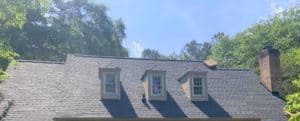
Dormers are frequently home improvement projects – added to houses after construction by contractors or homeowners with more enthusiasm than skill. Unfortunately, dormers require fairly extensive and complicated flashing to be fully waterproof, and it is often the case that the flashing is installed incorrectly.
If you suspect your dormers are leaking, contact a professional roofing company. Avoid stop-gap solutions like plastering the area with roofing cement or sealant. These products generally will not permanently fix a leak.
Internal Condensation
This sort of problem isn’t in fact a leak, because the water is coming from inside your house. Condensation happens when the moisture in warm air is released as the air cools. This sort of condition can happen if your attic is poorly insulated as warm, moist air rises from your house, contacts the cool underside of the roof, and then condenses into liquid water.
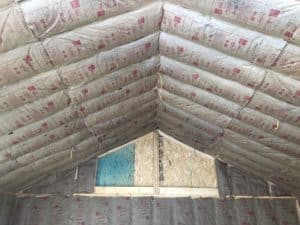
The solution to internal condensation involves improving airflow and insulation – preventing the conditions which allowed the condensation to occur.
Common causes of a leaking roof?
The three most common causes of a leaking roof are age-related deterioration, storm damage, and clogged gutters.
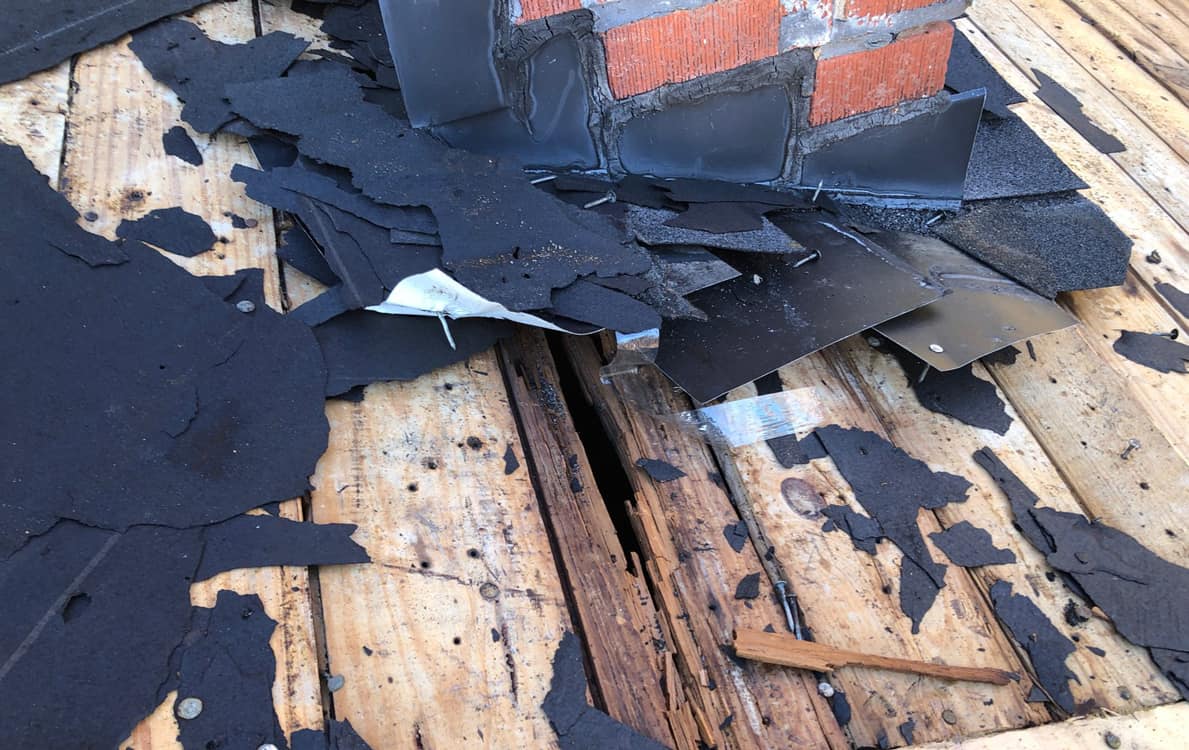
Roofs last a long time – upwards of 20 years – and many new roofs come with lifetime warranties. However, eventually shingles deteriorate and flashing corrodes. You should have your roof inspected regularly to catch these problems early and before they turn into serious leaks.
Storms can ravage a roof, with high winds lifting and damaging shingles as well as damage caused by windblown debris and fallen tree branches. After severe storms, particularly if you hear branches fall on your roof, check for missing or damaged shingles.
While time and storms are inevitable, clogged gutters can be avoided through proper maintenance. If gutters aren’t maintained then downspouts can backup causing water to pool in the gutters. This water can then wick into your roof sheathing, causing it to rot or mold. In some cases, this water can even leak directly behind your siding, causing water damage within your walls.
How can I find the source of the leak?
The difficulty in finding a source of a leak will vary depending on a lot of factors, but there are some basic tips that will make your search easier.
One of the best ways to spot a leak is to go into your attic with a flashlight and look for water stains or discoloration on the underside of the roof. These stains will persist well after a rainstorm, so even if the leak takes you by surprise in the middle of the night you should be able to spot the culprit the following morning.
Another way to spot problems is to walk around the exterior of your house, examining your entire roof surface for anything that looks out of place. While you won’t be able to spot every sort of problem from a distance, this is a great way to spot storm damage like missing shingles.
If you’ve narrowed down the area of the leak but can’t pinpoint the source, try using a garden hose to replicate rainy conditions. You’ll need two people for this: a spotter inside, watching for the leak to appear, and another person outside running the hose over the likely leak candidates.
Be sure to leave the hose in one place for a few minutes before ruling an area out, as some leaks require a bit of time for the water to slowly seep through. Keep in mind that this process can be fairly time consuming and you’ll need to approach it with patience.
What should I do if I have a leaky roof?
No matter the cause of your leaky roof, you want to act fast. Putting off a roof leak repair can lead to much more severe problems including water damage, mildew, and mold growth. If left unchecked a minor leak can eventually mean that you may need a complete roof replacement, not to mention the possibility of severe water damage inside your house and walls!
Some problems, like leaky vent pipes, are good candidates for homeowners who feel inclined for DIY projects, while bigger leaks are generally best left to professional roofers.
Avoid using roofing cement or sealant to fix leaks – these products are only suitable for small holes. Fixing a leak correctly the first time will save you costly repairs down the road.
Get your leaky roof fixed, fast.
Whether your leak is big or small it is important to take care of it before it turns into something more serious. At Rennison Roofing our skilled contractors are able to tackle everything from small repairs to complete roof replacements. Give us a call today to get your free roof repair estimate.
